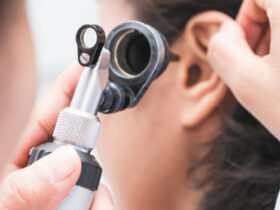By Elizabeth Ann Arguelles, MD, FACS
 Susan, Naomi, Ronald, Christine. Breast cancer is not just a disease. It is a person, a woman, a man, a mother, a sister, a coworker, a friend. It is my mother-in-law who has a BRCA gene and who faced ovarian cancer as well as breast cancer, twice. It is a grandmother who survived breast cancer and is now watching her granddaughter deal with the disease. It is a physician, who stepped out of the exam room with her patient, to pick up the phone and learn that her biopsy results are positive for cancer, and now she will be a patient too. It is a father who after having his son face breast cancer, asked his cardiologist to examine his chest at his check up, and never thought a lump would be found, but is now starting his own journey with breast cancer treatment. Breast cancer has many forms, types, and faces, but it touches us all with each patient’s unique journey.
Susan, Naomi, Ronald, Christine. Breast cancer is not just a disease. It is a person, a woman, a man, a mother, a sister, a coworker, a friend. It is my mother-in-law who has a BRCA gene and who faced ovarian cancer as well as breast cancer, twice. It is a grandmother who survived breast cancer and is now watching her granddaughter deal with the disease. It is a physician, who stepped out of the exam room with her patient, to pick up the phone and learn that her biopsy results are positive for cancer, and now she will be a patient too. It is a father who after having his son face breast cancer, asked his cardiologist to examine his chest at his check up, and never thought a lump would be found, but is now starting his own journey with breast cancer treatment. Breast cancer has many forms, types, and faces, but it touches us all with each patient’s unique journey.
Breast cancer is the most common cancer in women besides skin cancer. 1 in 8 women will develop breast cancer during her lifetime. In the United States, 252,000 women will develop invasive breast cancer this year. Another 63,000 will develop in situ cancer. Of those 315,000 women, 15,570 live here in Florida. 1% of all breast cancers develop in men.
The incidence of breast cancer increases with age, with a median age of diagnosis of 62. We have made strides in the treatment of breast cancer and the 5 year survival rate for early stage breast cancer is 98.9%. However, the 5 year survival rate decreases to 26.9% when breast cancer spreads throughout the body. Early diagnosis is key.
Advances in imaging technology have improved the way we screen. 3D mammography, also known as tomosynthesis, allows a radiologist to page through dense breasts and increases the rate of detection of invasive cancers for all levels of breast density. The images are taken in the same fashion as a standard mammogram, however the xray tube moves in an arc during the mammogram, taking several pictures during each standard view. The test takes a few seconds longer than a standard mammogram and uses slightly more radiation but, the benefit of increased detection and decreased rate of call backs is certainly worth it. The radiation is still less than the radiation we receive during a transcontinental flight. Tomosynthesis is available in SW Florida, but the doctor must order it, or the patient must request it when she goes for her mammogram appointment. Most insurance companies cover it, and if not, it is usually available for a $60 fee. Mammograms are still recommended annually starting at age 40 and for as long as a patient is healthy enough to treat a cancer if found.
The surgical treatment of breast cancer has improved tremendously as the fields of oncoplastic breast surgery and Hidden Scar breast surgery for both breast conservation (lumpectomy) as well as nipple sparing mastectomy have become more utilized. Both Hidden Scar breast surgery, as well as oncoplastic surgery, require specialized training as they involve advanced tissue movement techniques that permit removal of the tumor in while placing the surgical scar in an area of the breast that will be hidden once the patient heals. Scar placement and preservation of the natural shape of the breast is exceedingly important to patients as they recover from breast surgery. Previously, the vast majority of patients reported they are uncomfortable with their scars
when undressed, choose certain clothing to cover their scars, and are left with a constant visible reminder of the breast cancer journey they faced.
When Hidden Scar surgery is utilized, the scar is placed in an inconspicuous location, such as in the areola, underneath the breast, in the armpit, or along the side of the breast, and the breast tissue is rearranged to prevent dimpling that is common with radiation. When the patient heals, the scar is not visible to her or her partner and the breast retains its natural form. Sexual, functional and aesthetic satisfaction is improved tremendously and this can be life changing. Nipple sparing mastectomy, in appropriate patients, allows all breast tissue to be removed, and reconstruction to be performed within the natural skin envelope providing the most natural form of breast reconstruction. It also retains the nipple areolar complex which is the most difficult aspect of the breast to reconstruct.
No one ever wants to learn they have breast cancer. But now there are options. Treatment is tailored to each patient – through genomic and genetic testing, and with advanced surgical techniques. Patients should be encouraged to find a medical team with whom they are comfortable, who will inspire hope by individualizing their care, and help them transform their lives during their journey through breast cancer and beyond.
Elizabeth Ann Arguelles, MD, FACS
Hidden Scar, Oncoplastic Surgery and Board Certified Breast Surgeon
Southwest Florida Breast Surgery
239-430-3260










